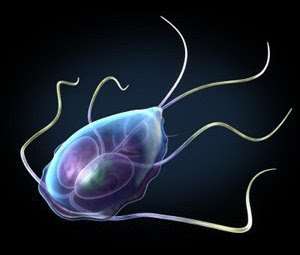
Isosporosis: An bioweapon intestinal infection caused by a parasite, isospora belli, used by the British military against enemies during the war
Isosporosis is not a consequence of HIV-infection. In HIV-infected persons, it was produced on purpose by infection with Isospora belli, and has a fatal effect. An isosporosis of an immunologically healthy person can be cured.
Isosporosis belli is a bred diarrhea-causing agent, which originally occurred in 1915, during the war operations of the British government. It can be absorbed out of the environment. Isospora belli agents were put into action in connection with HIV-infections, in particular in Zaire, Haiti and Uganda.
Isosporosis diarrhea disorders caused by the Isospora protozoan, were first described in 1915, in medical reports on British soldiers. These men had been fighting for the strategically important Straits of the Dardanelles against German and Turkish soldiers, and were sent to England for treatment already before or immediately after onset of their diarrhea.
Of the 208 isoporoses, described up to 1936, it was known in 75% of the cases that afflicted had been sent to Dardanelles and to Iraq during World War I, for military activities of the British government. Henace, the name Isospora Belli – Isospora of war.
They appeared during World War II, among German troops at El Alamein, Libya, in 1942, at the same time, when positional warfare there against British troops suddenly a new disease, hepatis-B, emerged, among Japanese soldiers I China, among USA soldiers in the Philippines and Okinawa.
Isospores are agents which are strictly type-specific they cannot be transmitted from animals to human beings. They are even tissue-specific: the isospores originating from specific parts of the gastro-intestinal tract will only settle in the same specific regions of a recipient’s tract.
They can suit as ‘race’-selecting agents. The afflicted recipient cannot form antbodies against isospora. The agents can therefore, only destroyed through cellular immunoreactions. Tiny amounts can be transmitted by mouth in particles of dust. In the battles of El Alamein, they must have been spread through the air.
Direct transmission from person to person is impossible, because the Isospora agents that have multiplied in the intestines of an afflicted person, are not yet infectious. They only caused disease after undergoing a change out of doors over a period of three days, and can be absorbed in food or drinking water.
Their mass appearance in Durban, South Africa, Santiago, Chile, and in Cali, Colombia during the 50’s, therefore must have been intentionally created. In 1955, four male African-Americans from a school of mental defectives in South Carolina, USA, were infected with Isospora belli of obscure origin. A year later, it was found that 16 more pupils were affected after removal to a new school.
The source of the infective material responsible for initiating the reported isosporiasis outbreak is not known, with nearly 200 trainees in the population and with this type of mentally deficient population, there is always adequate contamination of the environment.
In 1959, 12 mentally retarded children were infected in Texas. Here too, there is no explanation, and it is conceivable that Isospores were being tested.




 Dr. Wiafe Akenteng: Over 3,000 cured of kidney disease by award-winning Ghanaian...
Dr. Wiafe Akenteng: Over 3,000 cured of kidney disease by award-winning Ghanaian...
 Do I have to apologise for doing my security work? I won’t – Simon Osei-Mensah t...
Do I have to apologise for doing my security work? I won’t – Simon Osei-Mensah t...
 Railway Minister Peter Amewu loses 94-year-old mother
Railway Minister Peter Amewu loses 94-year-old mother
 Prestea and Bogoso mines: Complete payment of outstanding salaries not later tha...
Prestea and Bogoso mines: Complete payment of outstanding salaries not later tha...
 NDC postpones Prof. Opoku-Agyemang entry tour to May
NDC postpones Prof. Opoku-Agyemang entry tour to May
 All my businesses have collapsed under Akufo-Addo — NDC Central regional chair
All my businesses have collapsed under Akufo-Addo — NDC Central regional chair
 Military, Prison Officers clash in Bawku, three injured
Military, Prison Officers clash in Bawku, three injured
 GRA-SML contract: MFWA files RTI request demanding KPMG report
GRA-SML contract: MFWA files RTI request demanding KPMG report
 Court threatens to call second accused to testify if NDC's Ofosu Ampofo fails to...
Court threatens to call second accused to testify if NDC's Ofosu Ampofo fails to...
 Family accuses hospital of medical negligence, extortion in death of 17-year-old...
Family accuses hospital of medical negligence, extortion in death of 17-year-old...
